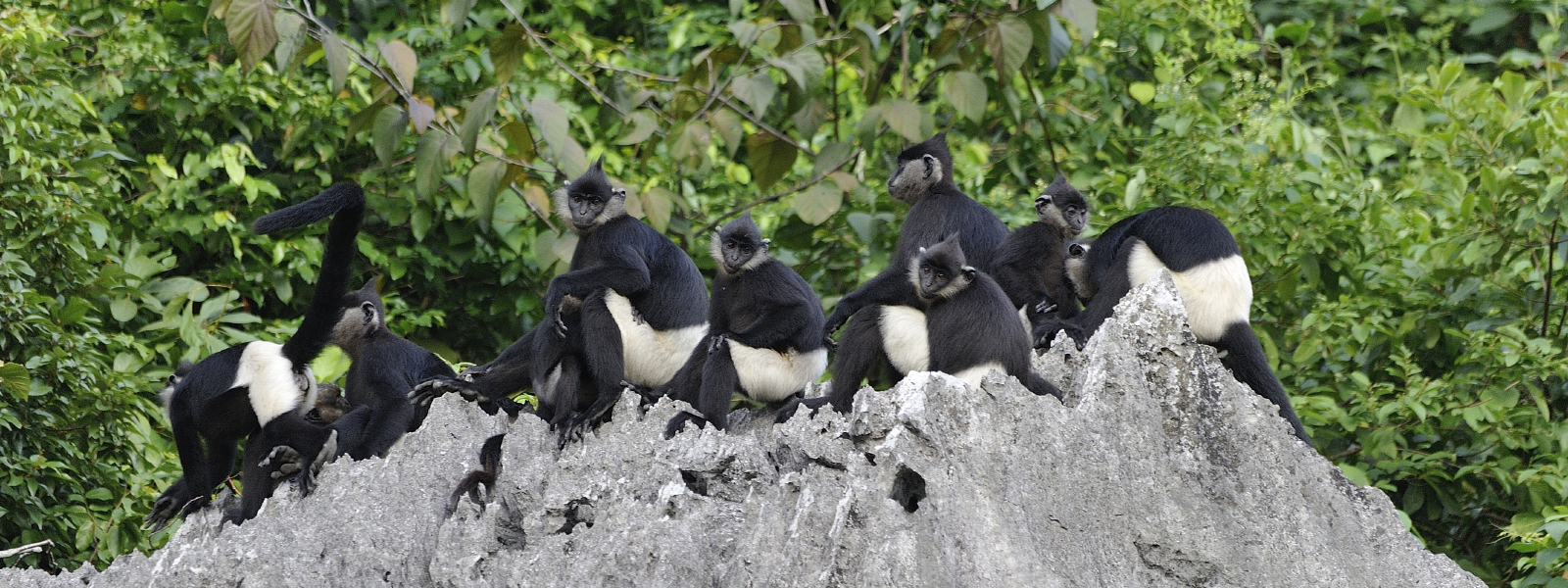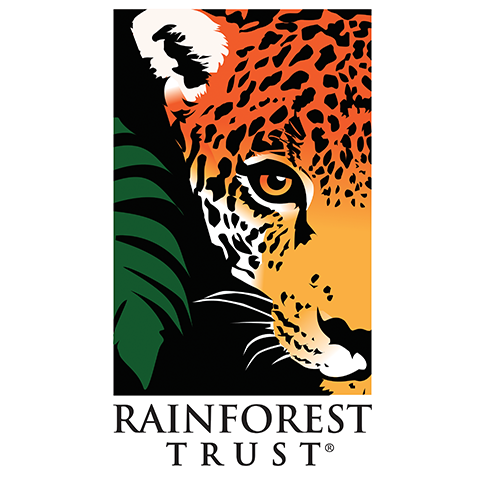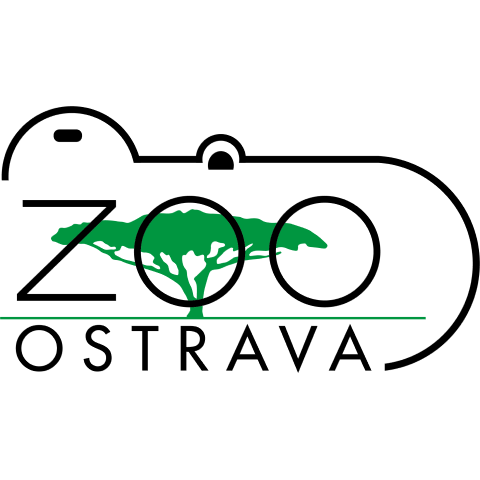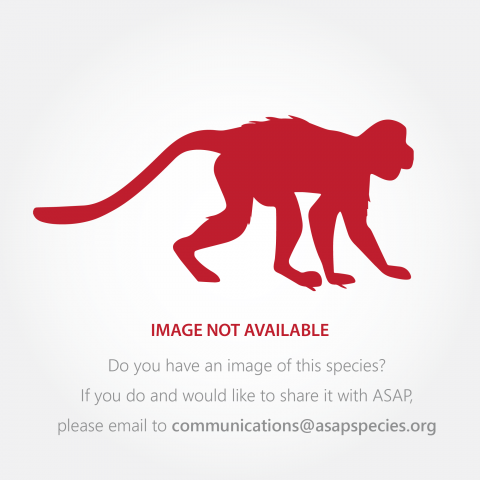Conservation Actions
This species is currently listed in CITES Appendix II. It is considered 'critically endangered' in Viet Nam, and is listed under the highest protection level in Decree 32/2006, and as species for special conservation considerations in Decree 160/2013. It occurs in six protected areas. Van Long Nature Reserve was established for conservation of this species in 2001, and there has been evidence of population growth in this reserve in the past 15 years.
The primary focus of conservation activities for the species should be the protection of all remaining populations. But this is far from the reality. The protection of areas without current protection status - which are three areas - is not feasible. To apply for a protection status and establish strong protection for an area is not a viable option for such extremely small populations with little chance of ever developing into viable populations. These populations will be eradicated and disappear in the near future. The most efficient option to stabilize the largest existing population in Van Long Nature reserve and to save sufficient habitat for the long-term existence of a viable population would be the extension of the reserve.
Translocation of isolated groups of animals or small populations from areas under pressure or for improving the genetic pool of a larger population is undoubtedly an important conservation tool for many species. The most critical point is the method with which to catch the animals in the areas which are often very difficult to access. One way is netting of the animals in a cave, a sleeping place which the animals occasionally or preferentially use in the winter season. Special caves and cracks in the limestone outcrops are often used consistently by generations of animals in one group. But groups which use easily accessible caves are as a consequence of easy access, are already wiped out by hunters and the remaining sleeping places are very difficult to access. Currently, there is no other proven technique for capturing animals in the difficult terrain that constitutes their natural habitat. A well-trained team with substantial financial and technical support would be necessary to develop a technique to safely capture animals in the wild.
A basis for reintroduction is the captive population of Delacour’s langur at the Endangered Primate Rescue Center. In 2011 a first pilot project was conducted with the reintroduction of three captive born individuals into Van Long Nature Reserve (Agmen 2014, Nadler 2012). Based on the successful result a second reintroduction took place in November 2012, also in Van Long Nature Reserve (Elser 2013, Elser et al. 2015). The programs have been very positively received by villagers and the awareness about protection of the species in the communes surrounding the nature reserve is very high. This has resulted in the long-term success of the Frankfurt Zoological Society conservation project and the strong involvement of local villagers and guards of the community protection unit in protection and conservation activities (Elser and Nguyen Hong Chung 2013).
From a conservation point of view, the establishment of a second population would be a preferable option in order to secure the long-term existence of the species. With a search of possible areas, only the newly nominated World Heritage Site “Trang An Scenic Landscape Complex” could provide a suitable habitat for a newly established population, and this is in planning.
Action Plan
Location Information
This species is endemic to Viet Nam and occurs in a very restricted area of north-central Viet Nam that totals about 5,000 km². The distribution of subpopulations and smaller social groups is closely related to the series of limestone mountain ranges in the provinces of Ninh Binh, Nam Ha, Hoa Binh, and Thanh Hoa (Nadler et al. 2003, 2004, 2015; Nadler and Brockman 2014). The area of occupancy (AOO) for this species prior to 2000 was only about 400 km² but with eradication of several populations the AOO is currently smaller than 300 km² (Nadler 2015).Geographic Range
Extant
Viet Nam
Population Information
Surveys carried out between 1990 and 2000 resulted in the discovery of 19 subpopulations in a restricted area of northern Viet Nam. Taken from these surveys the total of all populations was estimated at 49-53 groups and 270-302 individuals. In three areas where Delacour’s langur occurred in the past the species was already eradicated by the 1990s, following information provided by local people (Nadler et al. 2003). About half of all discovered populations (10) occurred in unprotected areas. The protection level in protected areas is mostly low, but still under control of the Forest Protection Department. In unprotected areas there is no control over hunting, and the animals are under high pressure.
With additional surveys in the first decade of the 21st century the total number of recorded individuals increased slightly. The number of groups is 50-57 and the number of individuals 281-317. The increased total number of langurs resulted in the development of the population in Van Long Nature Reserve, the area under special protection through the Vietnam Primate Conservation Program of Frankfurt Zoological Society, which included additional education and awareness programs for the surrounding communes of the area. The distribution of animals within subpopulations during this period indicates a reduction in the occurrence of larger populations compared to the previous decade (Nadler 2004; 2015). During this decade a number of small populations were eradicated. The exact years of extirpation cannot be verified. The information is based on interview surveys of local villagers, who indicated that the last sighting or record of the species was often several years ago. Therefore, these small populations are believed to be eradicated.
Surveys were carried out between 2012 and 2015 by the Endangered Primate Rescue Center and Forestry University Hanoi to verify the current situation of the species. The results of the surveys in all known subpopulations shows a dramatic decline compared to the last decade. The total number is estimated at 234-275 individuals. The majority occurs in Van Long Nature Reserve and if the population of the nature reserve is combined with the adjacent planned extension area to count as one population, the total for the area is 164-191 individuals. The remaining 70-84 individuals occur in the additional seven areas. Not one of these populations has a size which can guarantee a secure future, even if hunting could be eliminated. The problem of inbreeding for these small populations is not relevant. Before the inbreeding coefficient increases over a certain level, the populations will be extinct through other pressures.
The results of the surveys clearly illustrate the dire situation for the species and the extreme value of Van Long Nature Reserve as the last and only refuge for the survival of the species.
Threats
Hunting for the purposes of traditional "medicine" is the primary threat facing this species; most of the populations that survive are heavily reduced and fragmented. Only the subpopulation at Van Long, is thought likely to survive given the current hunting pressure; however, quarrying for limestone (cement), which is currently taking place there, has affected the ranging behavior of the animals (Nadler 2004, 2014). The smallest populations are extremely unlikely to survive should the one reproductively active male be taken or killed (Nadler 2004). Forest loss is a more minor threat as the species occurs in degraded areas. A potential threat is the rapid development of tourist facilities adjacent to protected areas.Partners
IUCN Red List Account Link
Please click here to see the species' IUCN Red List Account page.Photo Credits
Nguyen Van Truong (category and featured image)











